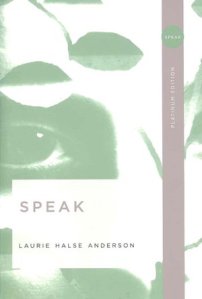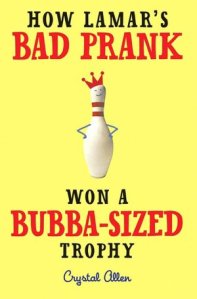Every start reading a book and find that you simply cannot put it down? You’re hooked. Snagged. Hopelessly snared by the character unspooling the story. That, my friends, is voice. Some authors have it in spades. It’s a very tricky subject to nail down. Rather than pontificate, let’s show two amazing examples.
Speak, by Laurie Halse Anderson
“The musical would be easy for me. I am a good actor. I have a whole range of smiles. I use the shy, look-up-through-the-bangs smile for staff members, and the crinkly-eye smile with a quick shake of my head if a teacher asks me for an answer. If my parents want to know how school went, I flash my eyebrows upward and shrug my shoulders. When people point at me or whisper as I walk past, I wave to imaginary friends down the hall and hurry to meet them. If I drop out of high school, I could be a mime.”
You can smell the desperation on the narrator in Speak. How does Anderson make it happen? Look closely, she has the narrator’s thoughts fire away like dialogue. It helps that she uses a first-person narrator in present tense. It creates an immediacy that resonates with the reader. She also utilizes made up words and phrases to convey this girl’s distinct point of view. Check out: “look-up-through-the-bangs smile.” Everyone can picture this. It so completely describes the action, yet it also demonstrates the girl’s viewpoint. Strong verbs like “flash my eyebrows” or descriptions like “crinkly-eye smile” also paint a picture of this narrator.
How Lamar’s Bad Prank Won a Bubba-Sized Trophy, by Crystal Allen
“Since Saturday, I’ve fried Sergio like catfish, mashed him like potatoes, and creamed his corn in ten straight games of bowling. And it’s just the middle of the week. People call Wednesday “hump day,” but for Sergio, it’s “kicked-in-the-rump day.” I’m his daddy now. The maddest, baddest, most spectacular bowler ever.”
Allen uses many of the same techniques as Anderson. She works with a first-person narrator in present tense. She makes up phrases like “kicked-in-the-rump day” and “creamed his corn.” She also employs fragments to better create the feel of clipped speaking. Notice she started the second sentence with “and.” Not grammatically correct, but if she’d fixed it, the narration would have lost it’s punch.
So when scanning for a book to read, look for a narrator who lets it all hang out. Or, if you’re a writer, use these techniques to add captivating voice to your writing.
Tim Kane


Short and to the point. I liked it. And that’s saying something. (Sorry, you know me, I couldn’t resist! LOL)
Both awesome writers. Wish I had that voice talent.